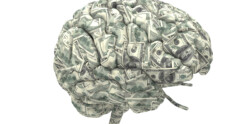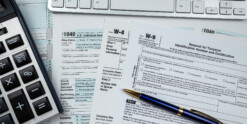The Dow recently hit a record high of 19,000, triggering predictable excitement.
This new high has been building since the election and is driven largely by bullishness about industries that may benefit from Donald Trump’s victory — financial institutions, defense contractors and industrials.
While Dow 19,000 is welcome news, it’s important to keep things in perspective. Round benchmarks in the stock market are show horses. They are pretty to watch, but they don’t do much to move the market. In fact, these benchmarks can distract investors from truly important aspects of the market.
Here are some important things to remember as you watch and read coverage of Dow 19,000:
- A 1,000-point gain on the Dow isn’t what it used to be. The rise from 18,000 to 19,000 represents just 5.5 percent growth — and it took almost two years to hit that new mark. Almost 500 trading days to move only 5.5 percent higher. That’s nothing to sneeze at, but also not a huge move.
- Any stock market number is simply a numerical expression of what companies are currently earning and what they are expected to earn over time combined with how investors are feeling at the moment about the economy and the world at large.
- So, earnings are what really matter. Aggregate earnings for the S&P 500 are nearly $120 over the past year. That puts this market level, the Dow and S&P 500 at a moderate to moderately high Price to Earnings, which is the real measure of how stocks should be priced. Third-quarter earnings for the S&P 500 rose 3 percent, the largest gain in profits we’ve seen in the past two years. What’s most important is that earnings are still expected to grow close to 10 percent over the next year. This potential earnings growth means infinitely more than the Dow hitting 19,000.
- Trump’s unexpected White House victory has already impacted the market in a significant way. Typically the stock market likes certainty. That’s why it tumbled every time Hillary Clinton fell behind Trump in the presidential polls. Hillary — for better or worse — represented the known. But the market has thrived on the “positive uncertainty” created by Trump’s win. Investors seem to want to believe Trump will indeed lower taxes, make better trade deals, rebuild our infrastructure, modernize the military and revamp Obamacare. That explains why roughly a month after the election, aerospace/defense stocks were up 12 percent, banks and many financial companies were up 15 percent, and Caterpillar (CAT), a harbinger of infrastructure companies, had jumped 16 percent.
- The prospect of the economy running hotter than we’ve seen over the past eight years due to Trump’s policies has also impacted interest rates. The 10-year Treasury bond yield has risen to over 2.25 percent since Nov. 8 — a huge jump from its 1.4 percent level in July. That, coupled with the market’s reaction to the possibility of a stronger economy, has dramatically increased the probability that the Federal Reserve will hike interest rates at its Dec. 13-14 meeting.
- Not everyone can be a winner, even at Dow 19,000. Because bonds and interest-rate-sensitive stocks have an inverse correlation to interest rates, we’ve seen areas like bonds, utilities, and consumer staple stocks dip since the election. Again, this explains why roughly a month after the election, a proxy for the corporate bond market (ETF symbol LQD) was down over 3 percent, and the consumer staples ETF (XLP) was off -2.0 percent despite the S&P 500 being up 5 ½ percent during the exact same timeframe.
Dow 19,000 is a nice milepost, but don’t let it take your eye off the road for too long. There are more twists, turns, mountains and valleys for you to navigate on your investment journey.
Read the original AJC article here.
DISCLOSURE
This information is provided to you as a resource for informational purposes only. It is being presented without consideration of the investment objectives, risk tolerance or financial circumstances of any specific investor and might not be suitable for all investors. Past performance is not indicative of future results. Investing involves risk including the possible loss of principal. This information is not intended to, and should not, form a primary basis for any investment decision that you may make. Always consult your own legal, tax or investment advisor before making any investment/tax/estate/financial planning considerations or decisions.













